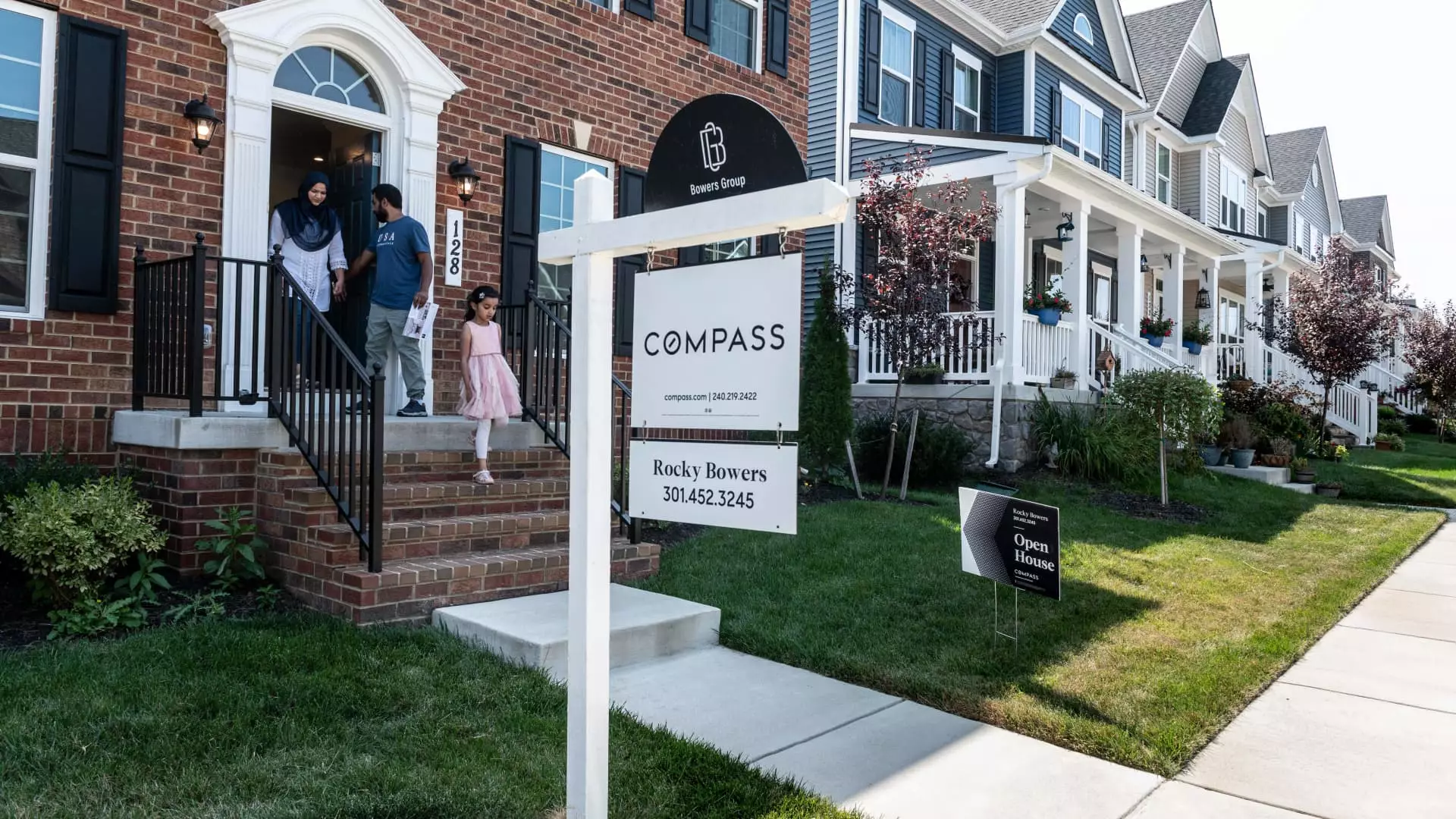In recent years, the United States housing market has faced a multitude of challenges that have left homebuyers in a precarious position. High mortgage interest rates coupled with a stagnating supply of available homes, alongside escalating prices, have created a perfect storm. To exacerbate these issues, tariffs on crucial building materials have been introduced, further complicating the already troubled landscape of home construction and purchase.
A pivotal point in this crisis is the reliance on imported construction materials, primarily softwood lumber and wallboard (gypsum), with the latter being sourced significantly from Canada and Mexico. With approximately 30% of softwood lumber consumed in the U.S. imported from Canada and gypsum from Mexico, the imposition of a 25% tariff by former President Trump essentially raises the costs for builders. According to Carl Harris, chairman of the National Association of Home Builders (NAHB), such tariffs lead to inflated construction expenses, inevitably transferring the burden to consumers through higher home prices.
Given the recent data from the S&P CoreLogic Case-Shiller national home price index, home prices have already surged over 40% since the pandemic’s onset, with November statistics reflecting a 3.8% increase compared to the same month the prior year. As construction costs rise, the potential for further price hikes looms large, placing an extraordinary strain on prospective homeowners, particularly first-time buyers.
The affordability crisis is not a mere statistical anomaly; it has profound implications for individuals aspiring to own homes. Jaret Seiberg, a housing policy analyst, articulated concerns that the tariffs could elongate this crisis, pushing homeownership out of reach for many. However, there is a silver lining; this predicament could ignite pressure on Congress to devise policies that stimulate entry-level construction through expanded tax credit programs.
The NAHB has articulated a strong request for the administration to exempt building materials from tariffs, reminding stakeholders of earlier policies aimed at boosting housing supply. Meanwhile, the ongoing rise in lumber production hasn’t alleviated concerns, as Canada still accounts for a staggering 70% of U.S. sawmill and wood product imports. The existing tariffs, already at 14.5%, would rise dramatically if tariffs are enacted as proposed.
Financially, the U.S. construction industry is in a fragile state. The anticipated costs from new duties on imports from key countries – Canada, Mexico, and China – could escalate construction material prices by an alarming $3 billion to $4 billion. While major builders are not immune to these increases, smaller homebuilders operating with tighter margins may feel the effects more acutely. Sheryl Palmer, CEO of Taylor Morrison, emphasized that the ramifications of increased tariffs would reverberate throughout the sector, affecting home prices and overall purchasing ability for consumers.
The challenge is compounded by labor shortages exacerbated by recent immigration policies. With about 30% of the construction workforce made up of immigrants, the deportation of undocumented workers raises a valid concern: who will fill these crucial roles? Bruce McNeilage, a Nashville-based developer, aptly put it, highlighting the implausibility of a robust housing market amidst restrictive labor conditions.
The effects of tariffs will not be limited to new construction. As cost pressures mount, buyers in the existing market may find themselves less able to save for down payments, especially if the pricing of everyday goods rises alongside building materials. The anticipated fall in interest rates thus becomes uncertain; if inflation trends upward due to tariffs, rates could instead increase, complicating financial planning for potential homeowners.
Moreover, the impending spring market, traditionally a peak season for buying, may experience unforeseen challenges. As economic realities intertwine with the emotional aspects of home ownership, the outlook for many becomes increasingly bleak. This layered complexity, characterized by rising costs and uncertain employment landscapes, signals that the U.S. housing market may face a rough road ahead unless substantial policy changes are enacted.
The U.S. housing market stands at a crossroads as tariffs impose additional burdens on buyers and builders alike. With home prices already soaring and supply challenges prevalent, umaintained fiscal policies and labor shortages raise the stakes further. It is crucial for policymakers to recognize this moment as an opportunity to implement changes aimed at fostering stability and affordability in the housing market, ensuring that the American dream of homeownership remains a realistic prospect for all.

